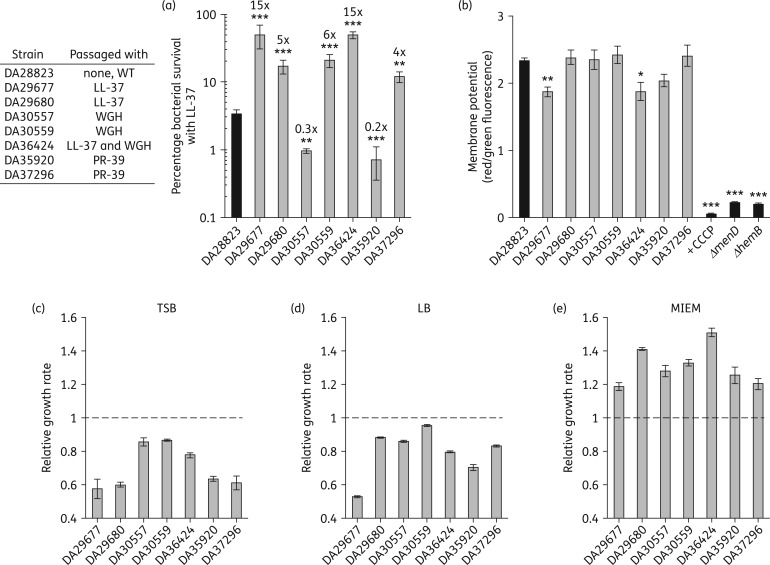Figure 1.
AMP resistance in S. aureus can evolve without a fitness cost. (a) Extent of LL-37 resistance was determined by calculating percentage bacterial survival after LL-37 exposure. Fold changes over WT (DA28823) are indicated above each bar. (b) Differences in membrane potential are presented as the ratio of red/green fluorescence intensity following incubation with the fluorescent membrane potential indicator dye DiOC2(3). Assay was verified using the protonophore CCCP and two strains derived from the Nebraska Transposon Mutant Library that display reduced membrane potential (ΔmenD, NE1345 and ΔhemB, NE184532). Fitness was determined in (c) TSB, (d) LB or (e) MIEM growth conditions. Relative fitness is presented as the maximum exponential generation time relative to WT with the broken line representing the relative WT growth rate. All values given are the mean ± SEM derived from at least three independent determinations. Relative fitness assays were also performed in technical triplicate. Statistical significance relative to WT (DA28823) was determined by one-way ANOVA with Fisher's least significant difference test used for post hoc analysis (***P < 0.001, **P < 0.01 or *P < 0.05). All relative fitness values were statistically significant with P < 0.001.

